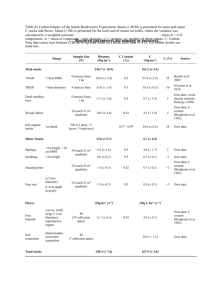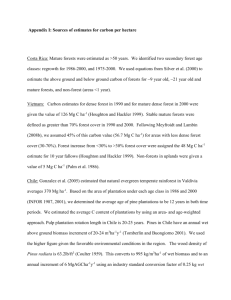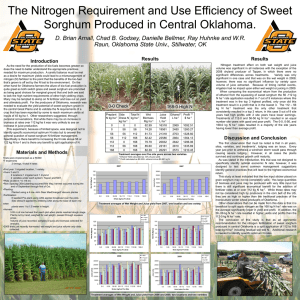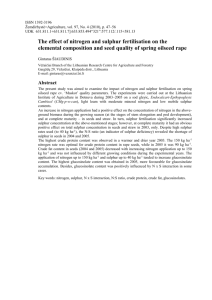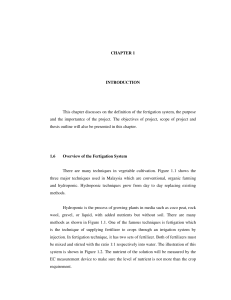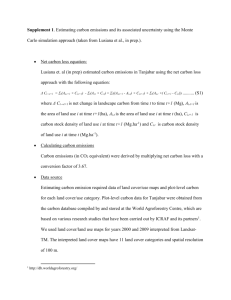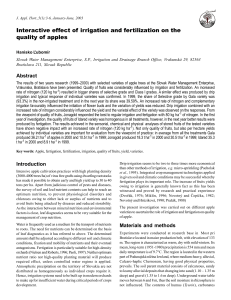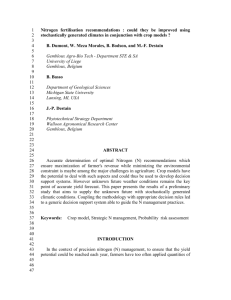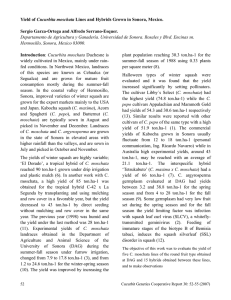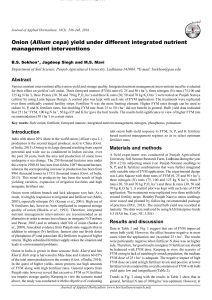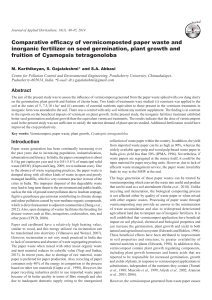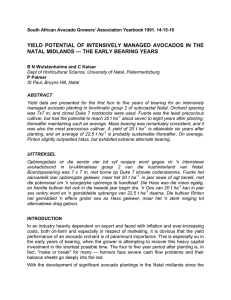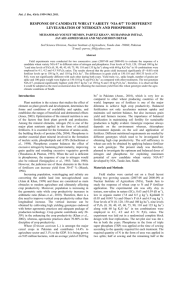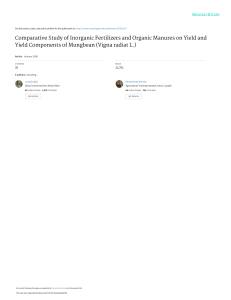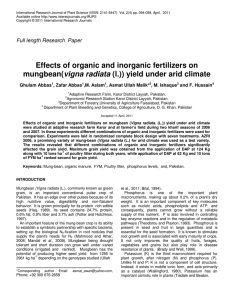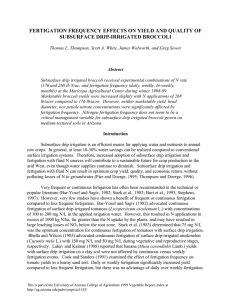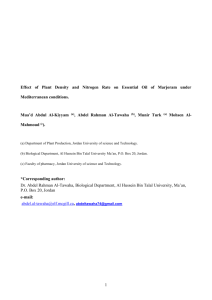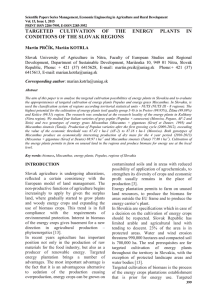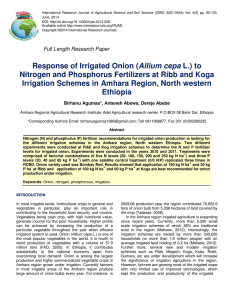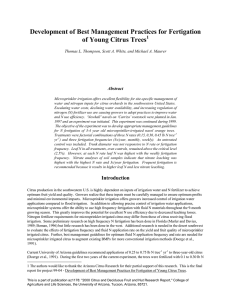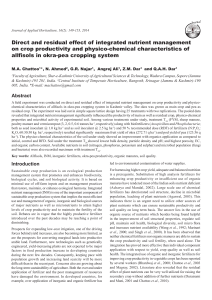Nitrogen and Phosphorus application to processing tomatoes grown
advertisement
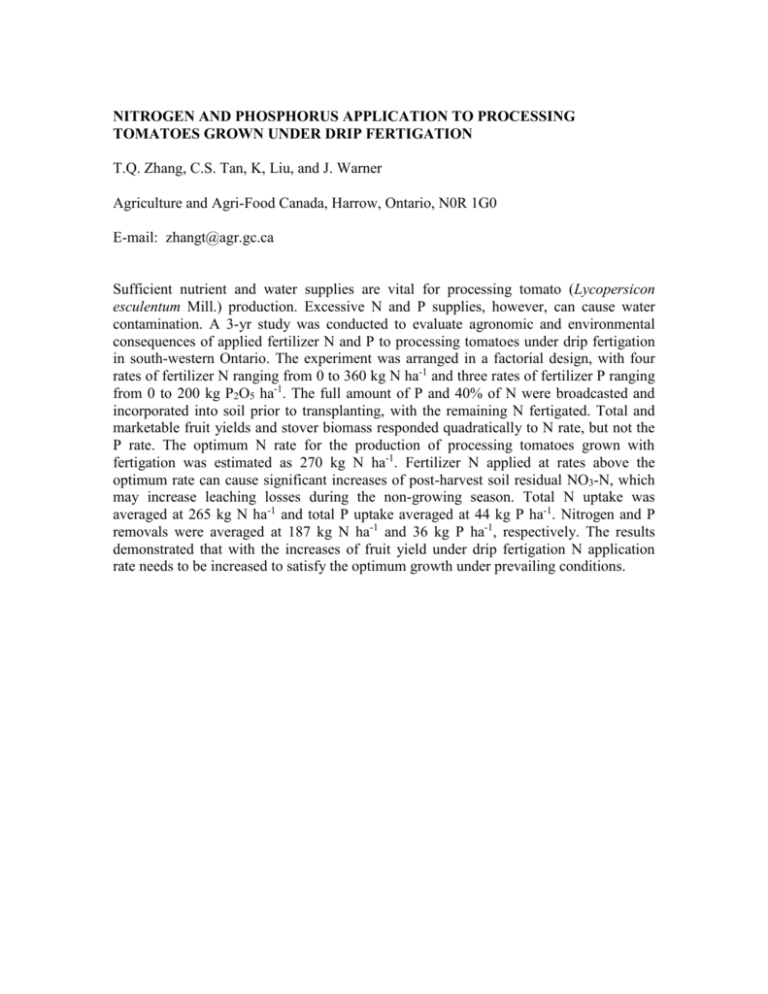
NITROGEN AND PHOSPHORUS APPLICATION TO PROCESSING TOMATOES GROWN UNDER DRIP FERTIGATION T.Q. Zhang, C.S. Tan, K, Liu, and J. Warner Agriculture and Agri-Food Canada, Harrow, Ontario, N0R 1G0 E-mail: zhangt@agr.gc.ca Sufficient nutrient and water supplies are vital for processing tomato (Lycopersicon esculentum Mill.) production. Excessive N and P supplies, however, can cause water contamination. A 3-yr study was conducted to evaluate agronomic and environmental consequences of applied fertilizer N and P to processing tomatoes under drip fertigation in south-western Ontario. The experiment was arranged in a factorial design, with four rates of fertilizer N ranging from 0 to 360 kg N ha-1 and three rates of fertilizer P ranging from 0 to 200 kg P2O5 ha-1. The full amount of P and 40% of N were broadcasted and incorporated into soil prior to transplanting, with the remaining N fertigated. Total and marketable fruit yields and stover biomass responded quadratically to N rate, but not the P rate. The optimum N rate for the production of processing tomatoes grown with fertigation was estimated as 270 kg N ha-1. Fertilizer N applied at rates above the optimum rate can cause significant increases of post-harvest soil residual NO3-N, which may increase leaching losses during the non-growing season. Total N uptake was averaged at 265 kg N ha-1 and total P uptake averaged at 44 kg P ha-1. Nitrogen and P removals were averaged at 187 kg N ha-1 and 36 kg P ha-1, respectively. The results demonstrated that with the increases of fruit yield under drip fertigation N application rate needs to be increased to satisfy the optimum growth under prevailing conditions.
